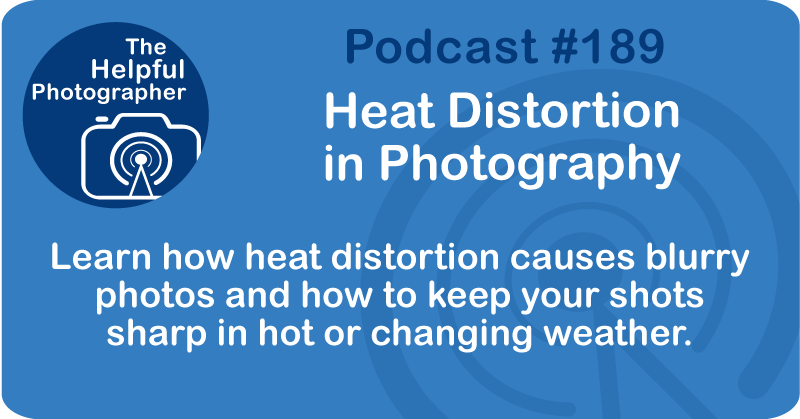Heat Distortion in Photography #189

Way back in episode 18, I discussed the six causes of blurry photos. But over time, I realized there are two more causes that I didn't cover back then. One is pretty common—simply failing to focus your images properly. For example, if you're manual focusing and you don't have your diopter dialed in correctly, you won't be focusing your lens properly. Or if your lens isn't calibrated properly, that can also lead to out-of-focus images. And lastly, if your camera simply didn't focus and it fired anyway. So yes, one big cause of soft images is just not focusing properly.
The other cause I want to talk about today is a lot more obscure—heat distortion. Now, heat distortion might not come up very often, but it can really impact your photos, making them look soft or out of focus even if your technique, camera, and setup are perfect.
So what is heat distortion? Think about when you're looking across a hot road or the desert and see that shimmering, wavy air in the distance. The mountains or horizons look like they're bending just a little bit. That's heat distortion in action. What's happening is warm air near the ground mixes with the cooler air above it, causing light to bend unevenly. So what your camera is actually seeing is unstable air rather than a soft lens.
The further your subject is and the longer your lens—especially lenses over 200 millimeters—the more likely you are to encounter this problem because you're looking through a lot of air. You might think your lens is out of focus, but it's really the air between you and the subject that's distorting the image.
Where this happens most often are in hot environments like deserts, beaches, or open fields, and also when the temperature is changing rapidly, like early in the morning or late in the afternoon as the sun is rising or setting. If you're out shooting and you can't figure out why your photos suddenly look a little bit soft after ruling out motion blur, bad focus, and other usual suspects—the air itself might be the problem.
Aside from heat distortion in the distance, there's also another surprising place you'll get heat distortion—and that's inside your lens hood. Lens hoods are great, and they're there to prevent flare, but they can trap air as well. If your camera's been in an air-conditioned room all night and you step outside into warm air, the warm and cold currents mixing right in front of your lens, trapped inside that hood, can cause distortion and soft photos. This is most likely to happen with large hoods associated with lenses over 200 millimeters long.
What about in the cold? Well, the same thing can happen at the other end of the thermometer. Last week, while in Antarctica, my gear lived inside my warm cabin overnight. When exposed to the freezing air outside, aside from the condensation problem, I was also aware that there might be some heat distortion issues too. Sudden temperature changes can cause the same distortion effect—just reversed.
So, what's the fix for all this? First of all, remove the lens hood until the lens reaches the same temperature as the environment. If you have flare problems, you can manage that by adjusting your angle or using your hand to block direct sunlight. Once the lens and air are at equilibrium, pop the hood back on and continue shooting. If there's heat distortion in the atmosphere, you're stuck—it is what it is. Try and find a way to work it into your composition. That's the best advice I can give you.
So next time your images look mysteriously soft, after checking focus, shutter speed, ISO, and your gear, don't forget the air itself. Heat distortion can sneak up on you, especially when shooting long lenses in changing temperatures.
I hope that was helpful. Until next time, keep on shooting.











